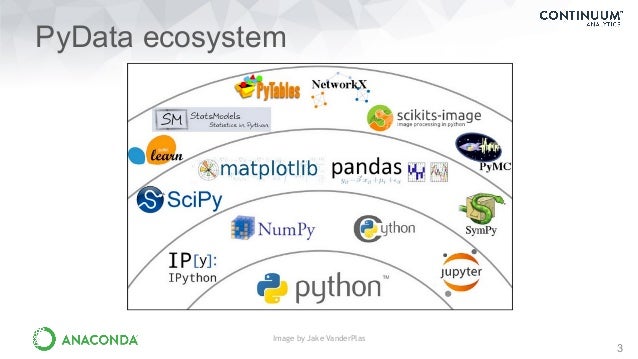
一、为什么要用 IPython?
IPython (Interactive Python 的简写) 是一个强大的交互式 Python Shell,由 Fernando Perez 在 2001 发起。它的目标是提供 “Tools for the entire life cycle of research computing.” 如果说 Python 是数据科学操作的引擎,那么 IPython 就是交互式的控制面板。
IPython 的优点:
- 交互式和批处理功能
- 提高编写、测试速度,执行结果立即可见,方便调试
- 同时保存脚本和计算过程,可重复可互动
- 丰富的数据可视化工具
- 能在本地计算机上对远程服务器中的数据进行分析
- 兼容 markdown 语法,满足数据分析、课程教学、博客写作等需求
Python Scientific Ecosystem

IPython 只是为 NumPy、Scipy、Pandas、Matplotlib 等包提供一个交互式接口。其本身并不提供科学计算的功能。这些工具组合在一起,形成了可以匹敌如 Matlab、Mathmatic 这些复杂工具的科学计算框架。
二、Shell or Notebook?
使用 IPython 有两种方式(前提是已经安装好 IPython)。
在命令行中使用
在命令行中输入 ipython,进入 IPython 环境:
1 | Python 2.7.10 (default, Jul 30 2016, 19:40:32) |
在 Jupyter Notebook 中使用
Jupyter Notebook 是基于浏览器的 IPython shell 图形界面,非常适合用于开发、协同、分享甚至是发布数据科学研究成果。Notebook 以 JSON 格式保存整个交互式会话,可以兼容 Python 代码,文本标记语言如 Markdown,图片,视频,媒体内容等。 IPython Notebook 在 Python 社区中越来越普遍,特别是在科学研究与教育领域,很多课程/博客/书籍都是用 Notebook 写的。
安装 Jupyter 后,在命令行输入 jupyter notebook,进入 IPython 环境
1 | [I 15:28:38.305 NotebookApp] Serving notebooks from local directory: /Users/kidult/Workspace/PresentWrok/OpenMind/2016.OM.DS/my_venv |
浏览器会打开本地的 Jupyter 控制台,新建或选择 .ipynb 后缀文件打开,就可以看到 Notebook 的页面了:

三、Notebook 基本结构和操作
在 Jupyter Notebook 中,基本的操作单元是 cell:

每个 cell 由 In和Out,即输入和输出部分组成。在这里,IPython 实际上生成了名叫 In和Out 的 Python 变量,把操作历史存储起来,以便随时调用。_可调用上一个输出,_X可调用 Out[X] 的输出。
IPython 中的 cell 支持 Markdown 格式,所以很适合用来生成带源码和运行结果的文档。

Notebook 中常用操作
命令模式 (按 Esc 键进入)
| 键盘 | 命令 | 操作 |
|---|---|---|
| ↩ | 回车 | 进入编辑模式 |
| ⇧↩ | shift+回车 | 运行 cell,选择下一个 cell |
| M | M 键 | 切换为 Markdown 格式 |
| A | A 键 | 在上方插入 cell |
| B | B 键 | 在下方插入 cell |
| D,D | 按两次 D 键 | 删除所选 cell |
| H | H 键 | 显示快捷键 |
编辑模式 (按 Enter 键进入)
| 键盘 | 命令 | 操作 |
|---|---|---|
| ⌘] | command + ] | 缩进 |
| ⌘[ | command + ] | 取消缩进 |
| ⌘Z | command + Z | 撤销 |
| ⌘⇧Z | command + shift + Z | 重做 |
| ⌘↑ | command + up 键 | 跳到 cell 开头 |
| ⌘↓ | command + down 键 | 跳到 cell 结尾 |
四、实用功能
Tab自动补全
在输入命令时按下 tab 键,可以查看补全选项:

用 ? 查询文档
比如,要查询 len 的用法,只需要输入 len?
1 | In [2]: len? |
另外,用 ?? 可以查看源代码,比如输入square??
1 | In [8]: square?? |
魔法命令
通过%lsmagic即可查看,以下为部分命令:
| 命令 | 命令说明 |
|---|---|
| %hist | 查询输入的历史 |
| %reset | 清空 namespace |
| %time | 显示 Python语句的执行时间,包括 cpu time 和 wall clock time |
| %timeit | 显示 Python语句的执行时间,但是这个命令会多次执行相应的语句(可以指定次数)%timeit |
| %bookmark | 用于存储常用路径 |
| %cd | 进入目录命令 |
| %env | 显示系统环境变量 |
| %pushd dir | 将当前目录入栈,并进入dir指定的目录 |

